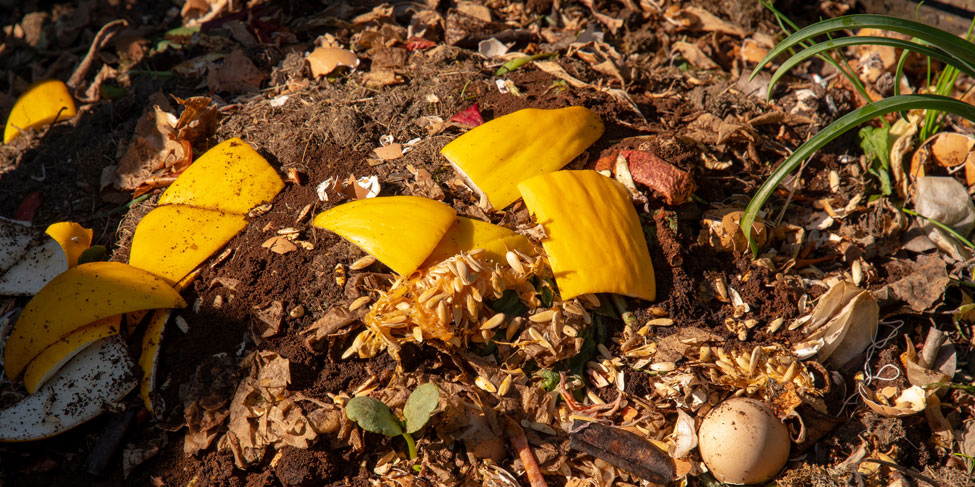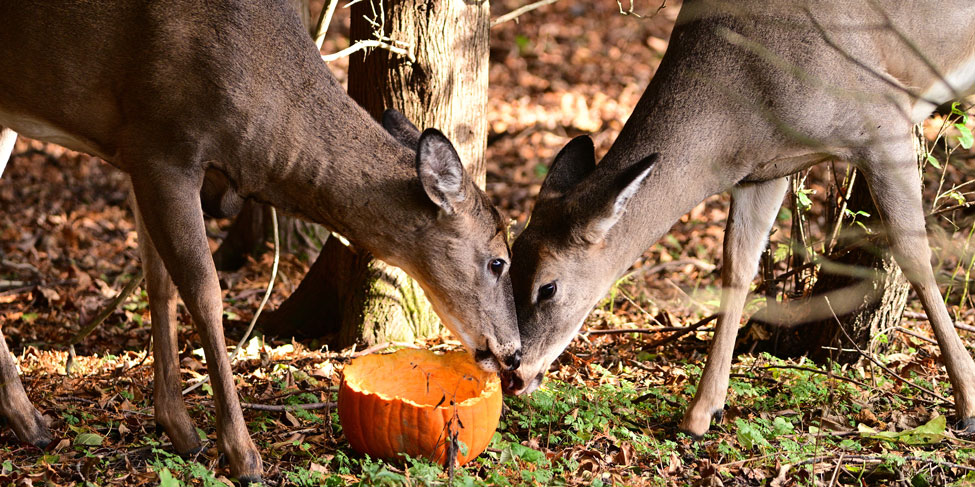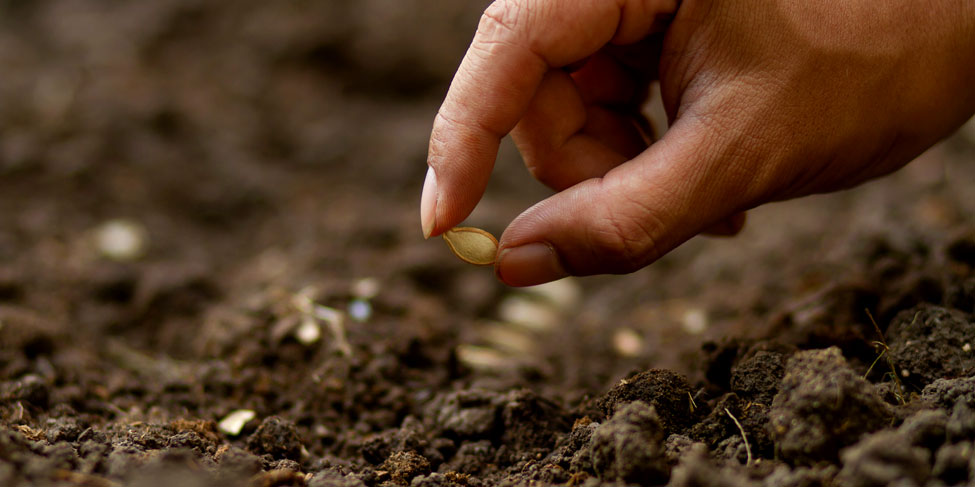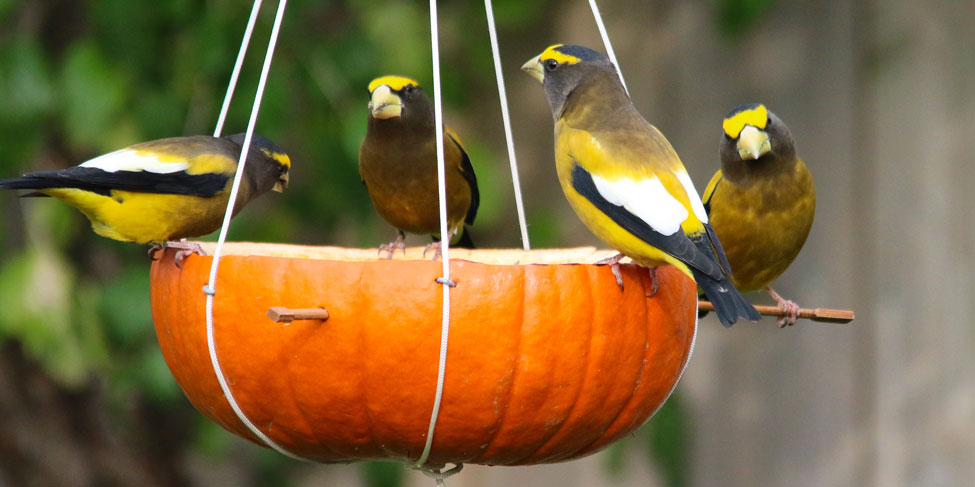The Great Pumpkin (Dilemma)
November 5, 2025
By Gretchen Westdal Centers
A tradition beloved by many, carving the annual Halloween jack-o’-lantern out of the bountiful crop of potatoes and turnips.
Wait, what?
It’s true.
The tradition of the jack-o’-lantern originated in Ireland centuries ago. It all started with a myth about Stingy Jack, a roving soul who was denied entry into heaven for his wrongdoings. As the tale spread and the lore took hold, people began to carve demon faces into potatoes and turnips to frighten Jack away. Upon immigrating to the U.S., many of the Irish maintained this tradition and used the abundant pumpkins instead. The timing of carving is based on the Celtic festival of Samhain, which marked the end of summer and the beginning of the new year on November 1.
Picking Perfect Pumpkins
Amazingly, the fabled tradition has morphed into a fun, family activity that now spans all types of religions, backgrounds, ethnicities and customs. A beautiful example of how the amalgamation of people who call the U.S. home all feed into our shared collective. The pumpkin replaced the potato and turnip, and throughout the years, people have replaced the simple pumpkin with Cinderella pumpkins, Casperitas, Rouge vif d'etampes and more. With more than 970 different varieties of Cucurbitaceae (the plant family name for gourds, squash, pumpkins and more), each household can put a creative spin on the varieties that adorn their porches and stoops.
The infatuation with decorating for Halloween has grown throughout the years. Getting that perfect porch-scape to post on social media or simply enjoying the autumnal scene has people hunting for unique and vibrant varieties. With that, the number of pumpkins, gourds and haystacks that are left once the season is complete can be quite a lot. And farmers are keeping up with the demand.
The USDA estimates that in 2023, farmers in just the top six pumpkin-producing states — California, Illinois, Indiana, Michigan, Pennsylvania and Washington — harvested more than 1.2 billion pounds of pumpkins. This includes varieties used for both food and ornamental purposes. Illinois holds the title of the state that produces the most pumpkins, accounting for 95% of the crop.
In 2024, it was projected that Americans would spend $834 million on pumpkins for the 2025 Halloween season — and most of those would end up in the trash. That trash then fills our already full landfills, creating more methane emissions from landfills that can contribute to warming temperatures and negative impacts on our environment, farming conditions and soil health.
To mitigate this effect, because every effort counts, finding alternative uses for pumpkins post-Halloween or ways to responsibly dispose of them can be a great way to reduce our carbon footprint.
Pitching Pumpkins
When the time comes to dispose of your pumpkins and other organic Halloween décor, there are a few different ways you can sustainably dispose of them or find alternative uses.
 1. Compost Carefully
1. Compost Carefully
Composting is the simplest — and most sustainable — way to dispose of pumpkins. They break down quickly and return valuable nutrients to the soil.
Start by removing any candles, wax, paint or glitter that could interfere with the composting process. Then break the pumpkin into smaller pieces to speed decomposition. Mix pumpkin pieces with dry leaves or grass clippings to create a nutrient-balanced compost pile that breaks down faster.
Even if you don’t have your own compost bin, check whether your city offers compost collection or if nearby community gardens accept organic waste.
 2. Cook Up a Fall Feast
2. Cook Up a Fall Feast
If your pumpkin was never carved and has been kept cool and dry, it’s likely still perfect for cooking. Smaller pie pumpkins or sugar pumpkins are especially good for recipes; they’re sweeter and less fibrous than decorative varieties. Pumpkins are rich in vitamins and nutrients. One cup has 7 grams of fiber and 209% of the daily value of vitamin A, which is a powerful antioxidant.
There are various ways to prepare it. Roast the flesh for soups, muffins and breads, or blend it into a smooth puree for pies or sauces. Even the skin and scraps can be boiled into a light, flavorful vegetable stock. And don’t toss the seeds! They’re rich in protein, fiber and healthy fats.
Need a quick snack? Lightly coat seeds in olive oil and sea salt, roast at 350 degrees F for 10–15 minutes, and enjoy a healthy autumn bite.
 3. Wildlife Feed
3. Wildlife Feed
Wild animals will happily help you put those pumpkins to good use. Deer, squirrels, birds and other critters enjoy snacking on pumpkin flesh and seeds.
Cut the pumpkin into chunks and place them near wooded areas or the edge of your yard — somewhere animals can find them without becoming dependent on handouts. Just make sure your pumpkin is free from any decoration that could be harmful if ingested.
While wildlife can safely enjoy raw pumpkins, skip feeding them to pets. If the pumpkin is still edible, you can puree the flesh to make dog treats.
 4. Get Your Garden Ready
4. Get Your Garden Ready
Even without a compost bin, your garden can benefit from pumpkin leftovers. Simply bury pumpkin pieces directly in your garden bed or till them into the soil. As they decompose, they enrich the ground with organic matter and nutrients, improving soil health and fertility for next year’s planting season. Incorporating pumpkin into garden beds before winter helps condition the soil naturally for spring crops. You can also save and dry the seeds to plant your own pumpkins in spring.
 5. Craft Time for Kids of All Ages
5. Craft Time for Kids of All Ages
A pumpkin’s usefulness doesn’t have to end in the kitchen or garden. With a little imagination, it can find new life as a creative project or seasonal decoration.
Bird feeders: Hollow out half a pumpkin, fill it with birdseed, hang it with twine on a branch and watch the birds flock to this new treat.
Planters: Use pumpkin halves as biodegradable planters for fall mums or herbs.
Natural dye: Boil pumpkin skin to create a soft orange dye for fabric, paper or craft projects.
Seasonal décor: Repurpose uncarved pumpkins into Thanksgiving centerpieces or harvest-themed displays.
These projects not only reduce waste but also extend the beauty and charm of the season.
 6. Donate or Drop Off
6. Donate or Drop Off
If you don’t have time to compost or craft, consider donating your pumpkins. Many local farms, animal sanctuaries, zoos and petting zoos accept unpainted pumpkins as animal feed. Municipal green-waste programs also collect organic holiday leftovers for large-scale composting. Check your local waste management website or search “pumpkin recycling near me” to find community drop-off sites or post-Halloween composting events in your area.
Small Efforts, Big Impacts
While pitching pumpkins in the trash would be the easiest and fastest way to move on to the next holiday season, these small efforts can have big impacts. When most people choose smaller, more accessible sustainability acts, the positive effects on our environment can be seen. And as we the season of gratitude, that’s something we can all be thankful for.